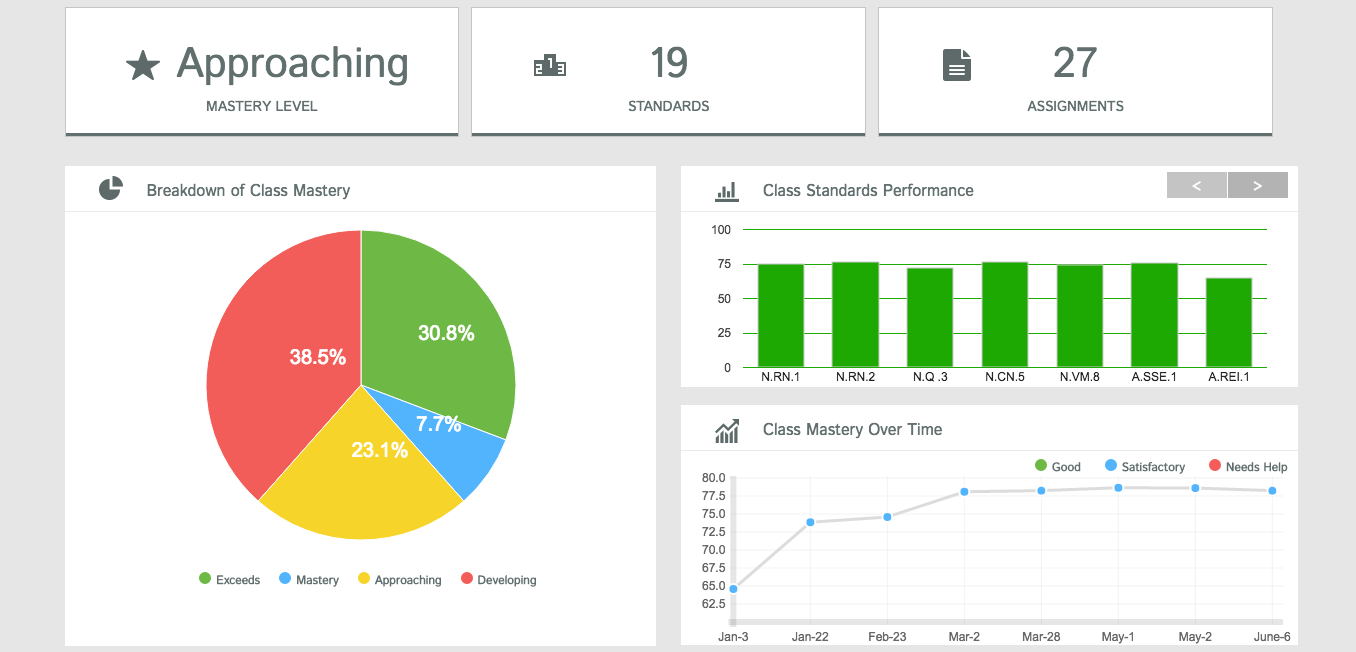How We Finally Left No Child Left Behind

Eight years past its expiration date, No Child Left Behind is finally gone. How and why did this happen? Read on to find out about the concerns that kept Congress from coming to an agreement on the old No Child Left Behind—and to find out more about the new law that could take education reform in a new direction.
At the end of December 2015, President Obama signed into law the Every Student Succeeds Act into law.
No Child Left Behind is no more as the new bill makes major changes to federal education policy.
That’s a major change as the federal government formerly dictated how states were to teach its students.
That changes as well as how teacher performance is evaluated. States will have the ability to individually appraise how well its teachers are doing performance wise.
Another alteration under the new law will allow states “to come up with their way to determine the quality of their local schools.”
This means that test scores are no longer the sole deciding factor for school performance. Vox.com notes that other factors will be taken into account, such as “parent involvement, student surveys, measures of school safety, or even whether students have “grit.”
The Every Student Succeeds Act also lists music as a portion of a well-rounded education and gives it more support than previous policies when it comes to access and funding.
The law also means federal grant funding is opened for states and local school districts to support music education programs and further train music teachers.
ESSA has been a long time coming. Considering that No Child Left Behind had needed an update since 2007, it is shocking how long it took to sign this new law.
What took so long to dismantle No Child Left Behind?
Here are the ins and outs of the drawn out process Congress engaged in to make the No Child Left Behind a thing of the past.
Reforming NCLB: What was the holdup?
In 2015, U.S. News and World Report sat down with Senator Lamar Alexander, chair of the Health, Education, Labor, and Pensions (HELP) Committee to talk about the re-authorization of No Child Left Behind (NCLB) and higher education.
In the interview, Alexander spoke of slicing the FAFSA application down to just two questions to encourage more students to apply, and he wanted to expand school choice so that more students have the ability to exercise variety in their education.
But perhaps one of the more interesting antecedents of the interview was Alexander’s grade on how Congress had performed on NCLB.
“We’ve been stuck for seven years. We should’ve reauthorized it. If students were this late on homework, they’d get an “F.””
If we could go lower on a grading scale, I’m sure many would have given Congress something much worse. NCLB expired nearly ten years prior, and many states still operated under waivers because Congress could not seem to agree on how to move forward.
Luckily, Alexander, a Republican, took a bipartisan approach to getting the law reauthorized. He said that Senator Patty Murray, the Democratic ranking member of the committee, had worked well with him to push the bipartisan effort through.
Nothing earth-shattering regarding the future of education, or Congress’ attitude towards it, was revealed. A lot of work remained with no guarantee that the reauthorized law would pass through this time around. Meanwhile, as time passed, more and more students suffered the repercussions of Congress and its slow pace.
This interview took place about a year after The Department of Education released a letter stating the new guidance for securing waivers from No Child Left Behind, President George W. Bush’s education reform law, for three or even four more years. The waivers stopped states from being tied to the rigorous expectations of Bush-led Adequate Yearly Progress, but in turn, each state had to adhere to education reforms encouraged by the Obama administration.
The Bush-era law had been due for an update since 2007. In 2012, the administration began granting waivers to state if they met certain requirements such as adopting college- and career-ready standards and developing teacher and principal evaluation systems based largely on how much students learn.
When this letter was released, 43 states and the District of Columbia had received waivers from No Child Left Behind, which allowed them to forego certain accountability requirements law in exchange for implementing education reforms backed by the Obama administration.
Each NCLB waiver was different. For example, the Colorado Department of Education was approved for a waiver of the 14-day notice requirement to inform parents of public school choice in 2009, while in the same year Hawaii was given a one-year waiver of the requirement to spend 20% of its yearly fiscal spending on choice-related transportation. In the Colorado waiver documentation, for instance, the state agreed to still provide public school choice notices to improvement districts. In Hawaii’s application, the governing educational bodies of the state agreed to use the funds released by the waiver to fund specific student needs based on data. In all of the waiver requests, states were required to carefully craft their requests and provide a reasonable alternative.
Some education advocacy groups were pleased with the emphasis placed on ensuring states have a plan to improve student achievement for all groups of students — including students with disabilities, those from low-income homes and English language learners — and prohibiting states from giving schools high scores on state accountability reports if they have large achievement gaps.
Waivers: an Appropriate Interim Solution?
The idea of individual states and districts asking for control over their student directives when it comes to achievement was a smart one that made up for some of the flaws of NCLB. Every student population is different so one federal mandate for assessment can never work. Even with the NCLB waivers, individual K-12 students are grouped together, but at least the waiver makes specificity of assessment and teaching a little bit more possible.
Waivers were a step in the right direction when it comes to policy reform simply because they gave states and districts a voice in the teaching, learning, and assessments processes. Even a complete overhaul of NCLB would have meant applying monotonous standards to a diverse K-12 student population, assuming that it included federal mandates again. Giving more power to individual districts, right down to specific schools, is the right way to address the needs of custom student bodies. That said, would accountability suffer if there were fewer demands from the top?
When the Senate tried to rewrite the law
According to The Washington Post, No Child Left Behind faced a 600-page rewrite in 2015. The Senate HELP committee (Health, Education, Labor and Pensions) worked on adjusting language and amendments that would seriously alter the bill’s impact.
Some of the revisions included a pivot towards allowing states to assume control over how teachers were evaluated and would drop the federal definition of a “highly qualified teacher.”
The bill also gave additional support for charter schools by providing “incentives for states to adopt stronger charter school authorizing practices.”
No Child Left Behind expired in 2007 after lawmakers couldn’t come to a compromise over its renewal. But this time seemed to be different. The bill had a bipartisan tone, and any amendment that did not have support from Democrats and Republicans was withdrawn during the bill’s mark up.
Those amendments could likely appear again when the full Senate had an opportunity to vote on the measure. Republican Senator Tim Scott had an idea to funnel federal money meant to help poor students into a voucher system that any child attending a high-poverty school may use to transfer into a new school district.
His amendment failed in committee, but he planned to reintroduce it on the Senate floor.
Other inclusions and provisions included: an update on federal testing requirements, the peer review process, and an alteration to funding for early childhood learning programs.
This updated version certainly looks better than the original. Students would not face as many tests, and the results of those assessments may no longer be tied to teacher evaluation. Still–more funding for low-income schools would be nice to fully level the playing field.
In July 2015, the United States Senate approved changes to the law, a move that finally set up negotiations with the U.S. House on updating the federal law on education.
“The Senate-passed measure would prohibit the federal government from setting performance targets or requiring specific standards such as the Common Core curriculum. It would make states responsible for establishing systems of accountability, including how much weight should be put on testing to determine whether schools are succeeding.”
According to ReviewJournal.com, the newly updated bill faced critics that believe it doesn’t reach far into to help “minorities and low-income students.”
As is, the bill could still have trouble passing, as there was too much wrangling left to do with the House.
But besides that point, what caught the eye of educators as they followed along with the progress of No Child Left Behind is how heavily it leaned on allowing states the make final decisions on education.
Instead of receiving direction from the federal government, each state may end up having the ability to create policy surrounding how it decides to approach education. If you think about it, that is an 180 from the idea of national standards promoted by the original No Child Left Behind.
Nearing the finish line
On December 2nd, 2015 the House of Representatives passed a bi-partisan K-12 education bill shifting authority from the federal government to states and local school districts for the nation’s 100,000 public schools.
The bill easily passed, with a margin of 359 to 64, and would replace the 2002 No Child Left Behind law if it receives Senate approval. The House vote was viewed as a major milestone due to resistance by some conservative Republicans concerned the bill didn’t decrease the federal role adequately. No Child Left Behind was due for restructuring for the past several years, yet Democrats and Republicans have struggled to agree on modifications.
The bill would decrease the accountability system put in place on a federal level, which required schools to illustrate progress academically via standardized test scores or face penalties. The authority of the education secretary would be dramatically reduced, and decisions regarding academic benchmarks, teacher evaluations, and other education policies would be dictated by the state.
Under the proposal, the government would still mandate that states test students in grades 3-8 annually and once in high school in reading and math. The test scores would be publicly reported according to ethnicity, race, income and disability. The states would then be required to step in with “evidence-based” programming in schools in which test scores and graduation rates were the lowest.
States, not the federal government, would dictate which actions to take in addressing struggling schools. The states would also determine how to evaluate school progress, how much of an impact test scores have and whether or not teachers are evaluated. Each state would institute their timelines and goals for academic achievement; however, their plans would require the federal Education Department’s approval.
The Every Student Succeeds Act: The Future of K-12 Education Reform
The new Every Student Succeeds Act, or ESSA, has been a long time coming. In 1983, “A Nation at Risk” was released citing ineffectiveness and the overall decline of our nation’s public school system. The report prompted extensive spending of both public and private funds to rectify the situation. A series of federal laws were also enacted to improve education, which led to the No Child Left Behind Act being adopted in 2001. Despite all the changes made since the early 1980s, test scores continue to decline nationally.
The Every Student Succeeds Act will continue to test students; however, that testing will no longer be such a primary focus for administrators and educators. The federal government will allow states and school boards to make decisions locally regarding education at the district level. The idea is to remove pressure, and stress schools were shouldering during the height of No Child Left Behind with excessive standardized testing.
Many are hopeful that the new act will be a welcome change and allow our public school system to flourish. On the other hand, some fear the lack of accountability may be a setback regarding tracking trends and addressing problems proactively. Columnist Michael Gerson tells the Huffington Post, “Before No Child Left Behind, only 29 states had real accountability systems; 11 states did not disaggregate by race at all; only 22 states reported graduation rates by high school.”
With intense budget constraints happening across the country, even less spending on education will likely occur. The gap in achievement between minorities and whites may continue to grow, with wealthier school systems doing well, and less affluent areas declining. Professor of Education at the University of California, Los Angeles and director of the Center for the Study of School Transformation, Pedro Noguera, told NPR that he fears ESSA furthers the belief that we can minimize inequality and increase academic outcomes simply by focusing on schools.
The good news is there is a trend occurring in education that involves new teaching techniques and partnerships with businesses that help equip students with practical workforce related skills. The decreased federal role in education may be counterbalanced by improvement at the local and state level, with help from the private sector. Hopefully, with focusing on schools at the local level, officials can more effectively pinpoint issues and in turn determine viable solutions for those problems.
It is in our best interest that all children receive a quality education. As a nation, we cannot afford to have large numbers of individuals who are under-educated and stuck in low-income jobs. The best way to an equitable society is to focus on education and providing individuals with the proper set of skills necessary to enter and flourish in the workforce.






